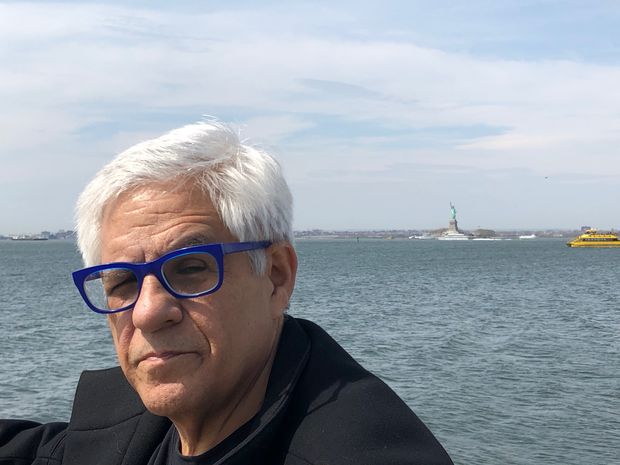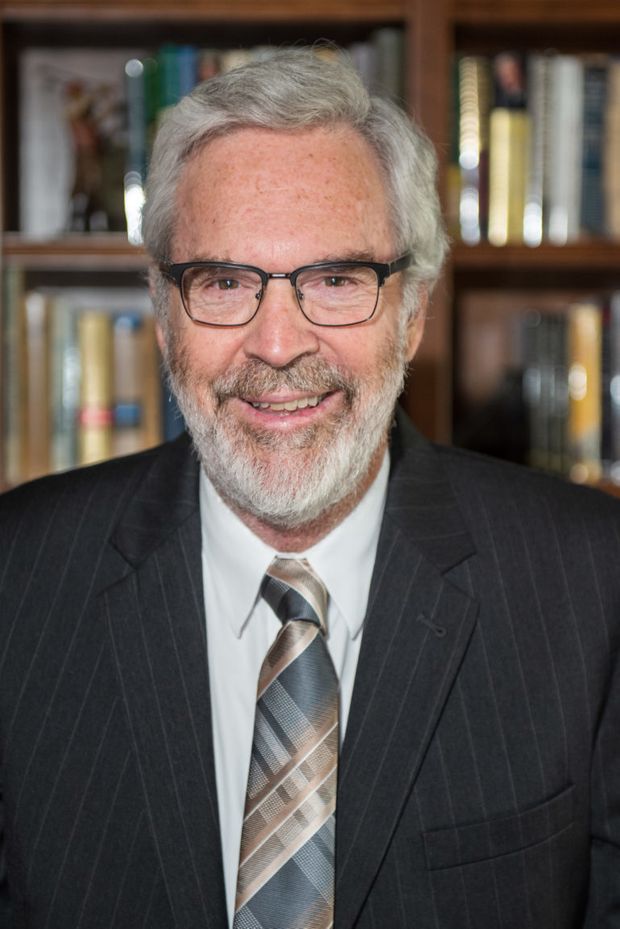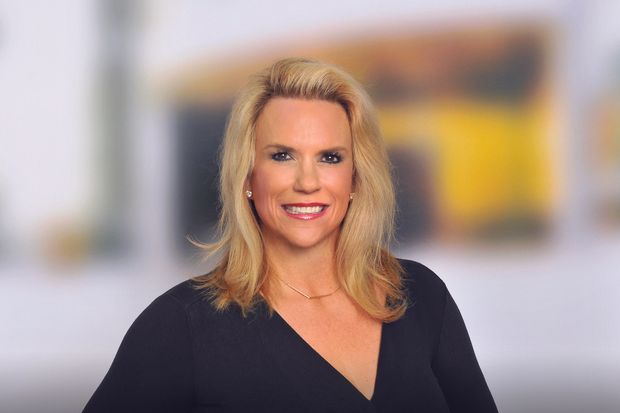As COVID-19 vaccinations push across the country, offices are beginning to crack open their doors and welcome back employees to business hubs. What about the legions of office workers who have grown accustomed to working from home and have come to appreciate their newfound flexibility — how will they be accommodated?
To get a sense of what a reconsidered city will look like, we gathered a virtual panel to consider how urban office centers might adapt and change. We asked: If working from home is here to stay, what will city centers dominated by office space look like in five years? How do we keep downtowns from being hollowed out? What happens to suburbs, and beyond them, the exurbs?
Answers have been edited for clarity and length.

Edward Glaeser is a professor of economics at Harvard University and the author of The Survival of the City, from Penguin Press.
City centers will become more residential, cheaper, younger and scruffier. While some work from home is here to stay, most employees will continue to go into an office, most of the time. Face-to-face contact can fuel innovation, enable on-the-job learning and prevent work from feeling purely transactional. There will be a reduction in the demand for commercial space, which should lead to lower commercial rents and some conversion to residential uses.
Offices that had been used by banks may get rented for less to startups that place more value on round-the-clock co-working. The office is not dead, but it is certainly mobile. Many downtowns face considerable risk of losing businesses to cheap, warmer locales. This moment would be a bad time for local governments to treat their local employers like a fixed resource that can be freely taxed. The most important guarantee of enduring economic success is to ensure that the city is a great place to live as well as work.
As for the suburbs…
Fear of contagious disease motivated the first suburbanizers in the 19th century, and it can still have that effect today. The general trend to larger suburban homes over the last 40 years will continue and per-haps even accelerate. Some empty nesters will stick to the suburbs rather than re-urbanizing. Some parents with school-age children will speed up their move to the suburbs. Nonetheless, I see this as being a marginal change in the suburbs, not a great watershed.

Brooks Rainwater is senior executive for the Center for City Solutions
at the National League of Cities.
While the wholesale adoption of work-from-home policies by companies will not be uniformly undertaken, even a movement of 10% of the workforce from downtown business districts to remote offices will have a huge impact on city centers and neighborhoods throughout metro regions.
A broader geographic dispersion of talent beyond just a cluster of large, superstar cities could lead to a more equitable wealth distribution throughout the country as well as alleviate some of the persistent affordable-housing problems faced by our largest cities. Throughout 2020 we saw a migration from cities like San Francisco and New York toward the Sun Belt and smaller metro areas, with particularly strong growth in places like the Austin and Miami regions.
And in the suburbs and exurbs?
With major cities like New York and Washington only seeing 10% or 20% of office workers back in offices by the end of last year — and most observers not expecting the bulk of those [who] do return to in-office work until this summer— the long-term impact on downtowns will be felt. If, as many people are predicting, a large number of major companies and organizations go toward a blended office-and-remote environment, this could lead to continued growth in suburbs.
Regionalism will continue to grow in importance as cities, suburbs and exurbs more fully recognize that they are intricately linked in good times and bad. Trends in suburbs toward mixed-use development, more walk-ability and increased transit connections were long established before the pandemic, and these trends will only proliferate and accelerate post-pandemic.

Credit: Elizabeth Lippman
MaryAnne Gilmartin is founder and CEO of MAG Partners LP, a New York–based real estate development company.
Office workers are clamoring to feel the energy and collaboration they have missed the last year, but without giving up some of the newfound flexibility in their workdays. I think that this dynamic will be great for office buildings and dense commercial districts by forcing them to become more mixed-use — something that was happening even before COVID-19. A more flexible workweek will take the strain off the rush-hour crush and provide a great opportunity to adapt streets, parking and office structures to create more vibrancy. Existing districts should permanently cede more public space to outdoor dining, urban parks, and pedestrian and bike infrastructure. For office buildings themselves, lobbies should drop their boundaries and integrate into food and beverage operations, keeping the spaces activated from morning to night.
Does that impact suburbs and exurbs beyond?
If we think of this as one ecosystem, then it won’t be surprising that suburbs and exurbs adapt in parallel with city centers. The biggest shift could be to more satellite offices and co-working locations. These won’t replace the corporate headquarters, but leading companies will seek them as supplements, so that a sub-urban parent could skip the commute one or two days a week while still working from a professional setting and be able to be home for baseball practice or the choir recital. The exurbs stand to benefit to some degree [among] people working in industries that really don’t need regular in-person interaction, but I think that when safety and security returns — and, post-vaccine, it will — the majority of the industries that drive urban centers will want and need to stay in proximity and preserve the magic that comes from interacting with other people. For most of us, the exurbs will remain an appealing reprieve and sanctuary, a getaway, not a full-time home.

Mitchell Moss is the director of the Rudin Center for Transportation at New York University, where he is also the Henry Hart Rice professor of urban policy and planning.
Working remotely has surged since the pandemic struck, leading many to believe that the office is dead. Nothing could be further from the truth. The office of the future will emphasize those activities that require human contact: informal meetings and settings that foster the easy flow of ideas and feedback. But organizations must adapt to the rise of remote work by shifting to a three- or four-day office workweek, with an office environment that fosters human contact but without 50-square-foot work stations, and by investing in new systems to assure public health, such as advanced air ventilation, access to an abundance of outdoor settings, and office spaces that accommodate informal, spontaneous meetings.
A handful of major cities will thrive as office centers for firms that serve national and global markets, but routine functions that depend on computers will continue to be located in low-cost locations. “Back office” functions have been moving out of cities for more than 50 years, ever since Citibank established a credit-card processing hub in South Dakota while other financial-services firms moved their bill-paying operations overseas. However, the high-level activities that depend on trust, informal contact and the flow of sensitive information will still be done over breakfast, lunch and dinner and in the office towers of New York and London, not in midsize cities like Charlotte, Austin, Boston or Salt Lake City, which simply lack the depth of legal, financial and media expertise to compete in the global economy. Technical expertise may be concentrated in Seattle or San Diego. But the great cities of the 21st century need to bring people together, and that requires superior international air connectivity as well as internet connectivity.
And outside of city centers?
We are witnessing the rise of the “supercommuter” as workers choose where to live — based on their preferences in education, recreation or climate, rather than proximity to work. The second-home community is increasingly a first home in the 21st century.

Mark Dotzour is a real estate economist who served for 18 years as chief economist of the Real Estate Center at Texas A&M University in College Station, Texas.
My speculation is that in the post-COVID era there will be a lot of people still working in downtown office buildings. It’s possible that a hybrid work environment could develop, where people work at the office three days a week and work at home the other days. In this scenario, I don’t see significant reduction in demand for office space. The employees will still need the space they had previously occupied. The reduced foot traffic would be challenging to downtown retailers and restaurants. The “urban vibe” has been a real joy to many people for many years now. It’s fun when it’s pleasant, exciting, stimulating and safe. When it’s not, working professionals and big and small businesses can move out quickly. The urban vibe is predicated on successful public-safety efforts. Nobody wants to live or work in an environment where they are afraid.
How might suburbs and exurbs be viewed as the pandemic fades into memory?
We are in the early stages of a grand social experiment to explore what these efforts might be. How might suburbs and exurbs be viewed as the pandemic fades into memory? The urgency to move for health concerns to the exurbs will lessen, but I see two reasons that would cause further movement away from the urban core. If working from home allows companies to attract the highest talent, then many companies could adopt the same policy. If violence and crime is allowed to proliferate in urban centers, then workers and businesses will leave. If people are allowed to work from home, then land-development opportunities may appear in smaller communities within a 60-minute drive of the central business district.

Ann Duncan is executive vice president and head of the occupier- services team at real estate services firm Savills, based in Tampa, Fla.
Now, more than ever, we realize that vibrancy in both work and personal life are essential to well-being. Based on this balance, offices and cities will continue to be important, but the landscape will shift. For younger cohorts, in-person interaction is crucial to both learning and career advancement, and younger workers are often less likely to have ideal working configurations at home. We believe the purpose of the office must adapt to focus on experience, productivity, collaboration and culture as priorities for employee attraction and retention.
And outside of major cities?
The pandemic has accelerated the trend of migration to secondary cities (for example, Austin, Phoenix, Nashville, Tampa and Denver), based on a variety of factors such as the cost of doing business, tax implications and quality of life. Cities that effectively mix the work (density of opportunities), personal (activities, culture) and quality of lifestyle (cost of living, commute time, nature) will continue to draw talent, further narrowing the gap between the biggest metro areas, like New York and San Francisco, and secondary markets. Labor analytics and strategy have never been more important.







